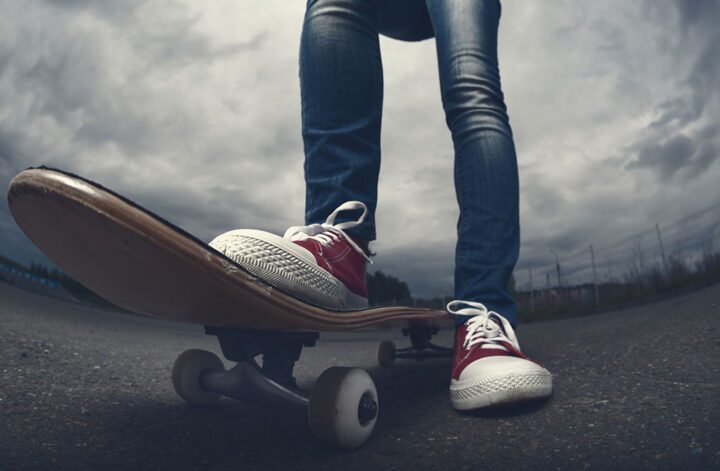Despite rumors that hoverboards can catch flames while charging and the fact that it doesn’t actually hover, the two-wheel self-balancing scooter (or “hoverboard” or “mini-segway”) was the Christmas gift of 2015. However, soon after the presents were unwrapped, a rumor about the device’s legality started circulating around Twitter.
An image showing a news report about a new motorized board law, as part of California’s Assembly Bill No. 604, started going viral. It is indeed true that a hoverboard law was set to take effect in California in January 2016. These hoverboard laws only apply to California and even their local officials could restrict or ban the use of hoverboards in public places. The California Highway Patrol will be one of the agencies enforcing the new law. Officers said the new age restriction protects the safety of the rider. They also said they will focus on education in the beginning. Officers understand some people may be frustrated, but ask for patience with the new law.
The new hoverboard law instructs that riders on electric skateboards (or self-balancing hoverboards) must:
- be 16 years or older,
- wear helmets
- ride on roads with a speed limit of 35 mph or less.
Under AB 604, it will also be against the law to ride an electric skateboard while under the influence of drugs or alcohol. Another restriction that went into effect this week is that the Metropolitan Transportation Authority has banned hoverboards from basically every method of public transportation that it controls. People are prohibited from “possession of hoverboards” on the New York City subways, city buses, Long Island Rail Road or Metro-North Railroad trains, and the Staten Island Railway. Hoverboards are also banned from all corresponding stations or platforms, too. Signs have been posted at stations to remind passengers of the new ban. Anyone who violates those restrictions, or rides under the influence, may pay a $250 fine. At the same time, there are new regulations regarding earbuds, often used for listening to music, so make sure to reach out to your local law enforcement if you want to know the details on this.
Hoverboard Laws in the other US States
The law on electronic vehicles in California also opens the door for other cities to pass their own laws regulating the use of hoverboards. That means you’ll have to check local ordinances on hoverboards before to make sure you’re not breaking the law. Police in Los Angeles has said that hoverboards will not be allowed on public walkways there and many private property owners have banned hoverboards over liability concerns, so the new hoverboard law doesn’t give riders free rein by any measure.
And although California has become the first state to officially define, regulate and permit hoverboards, hoverboards are still illegal in most parts of the country. Other states and municipalities have used pre-existing laws to determine whether or not hoverboards are allowed. In New York City, for example, public officials have deemed hoverboards illegal under New York State Traffic Law 114-d. The code regulates the use of electronic “personal assist” devices in public spaces.
A spokesperson for the New York City Department of Transportation has explained that the law’s definition of “electronic personal assistive mobility device” was broad enough to include hoverboards and that they would be regulated as such. In NYC, because the population is more than one million people, electronic personal assist device riders must be licensed, and the devices must be registered with the New York State Department of Motor Vehicles.
This new ban is not the first, though. Major airlines, retailers, the US Postal Service, and NFL teams have all banned or restricted the use, possession, or distribution of the two-wheeled self-balancing scooters. But the MTA’s ban is one of the biggest, next to the mass confiscation that happened in the UK.
So as the hoverboard laws vary from state to state, and business to business, you should read up on your local laws to find out if riding the device in public is illegal. Additionally, some personal accountability and responsibility have to come into play when riding your self-balancing scooter. Be a good person and don’t jeopardize other people’s safety while still enjoying your mini-segway.
Getting a safe Self Balancing Hoverboard
Additionally, there is the other issue of safety when it comes to exploding hoverboards, especially when it comes to the lithium-ion batteries used to power most hoverboards. In the statement announcing the ban, the MTA cites a study from the US Pipeline and Hazardous Material Safety Administration which found that 80 percent of the hoverboards it tested used batteries that weren’t properly certified.
Of course, we’ve seen plenty of anecdotal evidence of this over the last months as more and more hoverboards are caught exploding on video. It’s become enough of a problem that Amazon is offering refunds while companies like Swagway are building new versions with fire-retardant chassis. In order to still enjoy the awesomeness of the hoverboard, we have selected and reviewed the best and safest self-balancing scooters and mini Segways on the market. Below our selection of the best and certified hoverboards that apply with the new regulations and hoverboard laws, and all available to buy via Amazon.
[wp-compear id=”1461″]
If you want to make sure you get a quality product then you will be settled with one of these choices. For a more in-depth review of hoverboards, we encourage you to read our posts on self-balancing scooters and mini segways. What do you think of these new hoverboard laws? Is this the beginning of the end?

Welcome to the Active Thrills community! We, Nash and I, are the owners and authors of this special platform. We are so thrilled to say that this is definitely running actively to continue sharing all information and knowledge that we have about skateboarding, extreme sports, and gadgets in order to reach more and more people all over the world.






